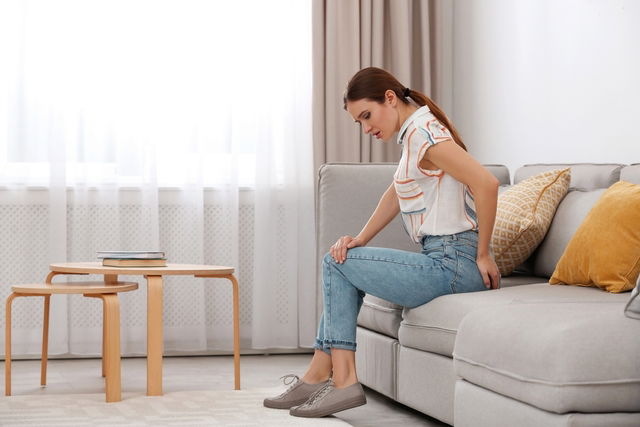A lump near the anus is most commonly caused by a hemorrhoid. However, lumps near the anus can also be caused by anal warts, abscesses, or cancer, which are more serious and require medical attention.
Anal lumps can be painful and cause bleeding and discomfort with bowel movements. You may also notice anal itching, which is a symptom that can also present with many underlying causes.
It is important to consult a gastroenterologist if you notice a lump near the anus for assessment and diagnosis. If necessary, the doctor can initiate treatment, which may include ointments or oral medication.

What causes lumps near the anus?
Hard lumps or bumps in the anus are usually caused by:
1. Hemorrhoids
Hemorrhoids are the most common cause of anal lumps. They occur due to the dilation of a vein, which appear as a small, soft “ball” in the anal region. In these cases, you may feel other symptoms like pain with bowel movements or bleeding in the stool. These lumps can present internally (which is when they are felt but not visible to the eye) or externally (when they are visible and palpable).
Also recommended: Hemorrhoid Symptoms: How to Know If You Have a Hemorrhoid tuasaude.com/en/hemorrhoid-symptomsGenerally, hemorrhoids are more common in people with a family history of them and in people who have chronic diarrhea or constipation. They can also occur in people who stand for long periods throughout the day or perform strenuous activity frequently. Learn more about what can cause hemorrhoids.
How to treat: In most cases, hemorrhoids can be managed by having a diet that is rich in fiber with adequate fluid intake (at least 2 L per day, or half a gallon per day). To treat discomfort, you can perform sitz baths, while intense pain can be treated with an analgesic or steroid ointment. These medicated ointments can be applied for 5 to 7 days. Read more about medications and home remedies you can use to treat hemorrhoids at home.
2. Anal warts
Warts are small skin nodules that can appear pink or white. They can appear in the anal region and normally do not cause any pain or discomfort. They are usually caused by an HPV infection in the area. Anal warts can cause some local itching and some mild bleeding which is noted while wiping. You may also feel a strange mass in the anus.
Generally, this type of infection is most common in people who engage in unprotected anal sex, especially with more than one partner. Learn more about the different types of warts that can occur.
How to treat: You should see a doctor to assess the lesions and prescribe treatment as necessary. Treatment usually involves cryotherapy, podophyllum 25% ointment or immune therapy.
3. Anal abscess
Although this is more rare, an anal abscess can lead to a lump near the anus. The abscess is made up of pus that emerges due to an infection in the area. It can occur due to a blocked gland or a sexually transmitted infection.
In addition to the presence of a lump in the anus, you may also feel symptoms like intense pain, anal swelling or rigidness in the area.
How to treat: In almost all cases, the pus from an abscess is aspirated by a doctor. In more serious cases, when the abscess is large, for example, it may need be surgically removed to help with healing in the area.
4. Molluscum contagiosum
Molluscum contagiosum is a skin condition caused by a pox virus that is characterized by small skin lumps. These can also affect the perianal region. This condition is more common in adults who engage in unprotected anal sex.
How to treat: Treatment is very similar to that of anal warts. These lumps can be managed with prescription ointments which contain salicylic acid, or an antiviral. Many times, the doctor may also suggest cryotherapy or laser therapy to destroy the lesions.
5. Anal cancer
This is the rarest cause of anal lumps, but it is also the most serious. It should be identified as soon as possible by a doctor to ensure a higher cure rate. In these cases, in addition to lumps, you may also feel constant pain, itching, difficulty with bowel movements or blood in the stool. Be sure to know the general signs and symptoms of cancer.
How to treat: Treatment is usually monitored by an oncologist and normally involves chemotherapy or radiation therapy. However, a small tumor can also be removed surgically.
6. Anal skin tag
An anal skin tag is associated with the growth of excess tissue in the anus which can occur due to chronic inflammation in the area. This can be triggered by hard stool, inflammatory bowel disease, hemorrhoids or infection in the area.
How to treat: Generally speaking, treatment is not necessary. However, the gastroenterologist may recommend surgical removal of the skin tag if it is large or when there is a greater risk for infection.
